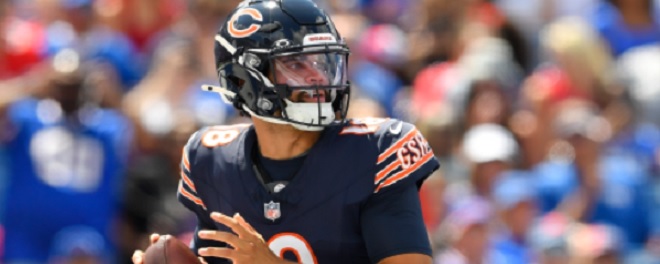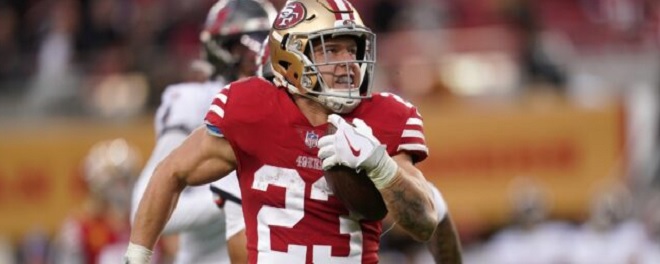One of the most erratic yet significant elements in establishing NFL power rankings during any given season is injuries. A single injury can drastically change the competitive scene and reshape championship aspirations for teams that spend millions on star players and build entire systems around them. The 2025 season has already shown how injuries can drastically alter power rankings and ruin team outlooks.
The relationship between injuries and power rankings becomes particularly complex when considering roster construction and depth. Teams with superior backup options or systems designed to withstand personnel losses maintain their rankings better than those heavily dependent on individual stars.
Power ranking changes significantly impact odds, and Canadian football fans following the coming games closely can keep track of current standings and odds through various betting sites for Alberta bettors, where injury reports and their potential impacts on team performance are carefully analyzed alongside traditional power metrics. These platforms provide crucial context for understanding how injuries translate into shifted odds and altered championship probabilities.
The Immediate Power Rankings Impact
When examining how injuries affect power rankings, the severity and timing create the most significant variables. Teams losing key players during training camp or preseason can adapt their systems and expectations accordingly, while in-season injuries force immediate recalculations of team strength and playoff potential. The 2025 season has demonstrated this principle dramatically with several high-profile cases.
Joe Burrow’s recent turf toe injury exemplifies how quarterback injuries create the most dramatic power ranking shifts. The Cincinnati Bengals quarterback, who was placed on injured reserve and is expected to miss at least three months following surgery, represents a catastrophic blow to Cincinnati’s season outlook. Before the injury, the Bengals were positioned as potential playoff contenders, but Burrow’s absence immediately dropped them in virtually every major power ranking system. The injury occurred during Cincinnati’s Week 2 victory over Jacksonville, when Burrow was tackled and immediately showed signs of distress. This type of injury to a franchise quarterback typically results in power ranking drops of 8-12 positions, reflecting both the immediate loss of talent and the reduced ceiling for team performance.
Similarly, J.J. McCarthy’s ankle injury has significantly impacted Minnesota Vikings’ power ranking trajectory. The rookie quarterback, already dealing with development challenges in his second NFL season after missing his entire rookie year due to injury, suffered a high ankle sprain that will sideline him for 2-4 weeks. McCarthy’s injury compounds the Vikings’ existing challenges, as he had struggled with consistency through his first two starts, throwing three interceptions and taking nine sacks while posting a league-low QBR of 20.1. The injury forces Minnesota to rely on veteran Carson Wentz, creating uncertainty about the team’s offensive identity and ceiling.
Historical Examples of Dramatic Impact
NFL history provides numerous examples of injuries creating seismic power ranking shifts that fundamentally altered championship races. The most dramatic cases typically involve quarterback injuries, but key defensive players and offensive linemen can also trigger significant adjustments.
Aaron Rodgers’ 2023 Achilles injury remains one of the most striking recent examples of injury impact on power rankings. Just four plays into his New York Jets debut on Monday Night Football, Rodgers suffered a season-ending torn Achilles tendon. The injury immediately transformed the Jets from playoff contenders to also-rans, with most power rankings dropping them from top-10 positions to the bottom third of league standings. The injury’s impact extended beyond just the 2023 season, affecting trade compensation with Green Bay and forcing organizational questions about long-term planning.
Dak Prescott’s 2022 thumb injury provides another compelling case study in injury-driven power ranking volatility. The Dallas Cowboys quarterback required surgery for a fractured thumb, sidelining him for 6-8 weeks during a critical stretch of the season. Dallas faced a challenging schedule during Prescott’s absence, including games against competitive teams like the Bengals, Rams, and Eagles. The Cowboys’ power rankings plummeted from potential division leaders to teams fighting for playoff positioning, demonstrating how even temporary injuries to key players can derail entire seasons.
The 2024 season featured several impactful injuries that reshaped power rankings throughout the year. Tua Tagovailoa’s injury significantly affected Miami Dolphins’ positioning, while Russell Wilson’s calf injury allowed Justin Fields to emerge as Pittsburgh’s starting quarterback.
Systematic Evaluation of Injury Impact
Modern power ranking methodologies have evolved to incorporate injury analysis more systematically, moving beyond simple win-loss records to evaluate roster construction, depth charts, and system dependencies. Teams with strong backup options or flexible schemes typically maintain higher rankings despite significant injuries, while those built around individual stars face steeper drops.
The concept of “disaster ratings” has emerged as one tool for evaluating injury impact on team performance. These ratings attempt to quantify how devastating specific injuries are to team success, considering factors like player importance, replacement quality, and timing within the season. Joe Burrow’s current injury, for example, received a 9/10 disaster rating due to his central role in Cincinnati’s offense and the significant drop-off to backup Jake Browning.
Teams with consistent injury problems often face skepticism in rankings even when healthy, while organizations known for keeping players available maintain credibility during difficult stretches.
Long-term Implications and Recovery Patterns
The relationship between injuries and power rankings extends well beyond immediate impact, as recovery timelines and return-to-form expectations create ongoing evaluation challenges. Teams often struggle to regain their pre-injury rankings even after key players return, particularly when injuries occur to quarterbacks or other system-critical positions.
Cincinnati’s situation with Joe Burrow illustrates these long-term considerations. While Bengals coach Zac Taylor has not ruled out a potential return later in 2025, the three-month recovery timeline means Burrow would miss a significant portion of the season. Even if he returns healthy, questions about rust, conditioning, and team chemistry will likely keep Cincinnati’s power rankings suppressed compared to pre-injury expectations.
J.J. McCarthy’s development timeline presents the Vikings with comparable difficulties. Although not as bad as Burrow’s injury, his ankle injury is part of a worrying trend of lower-body injuries that started with his torn meniscus during his rookie preseason. These recurring failures have an impact on long-term forecasts for team ceiling and quarterback development, in addition to immediate power rankings.
Injuries-related power ranking volatility also speaks to more general concerns about system resilience and organizational depth. According to analyst perceptions, teams that stay competitive during injury stretches typically see a swift recovery in their rankings after players return, whereas those that struggle greatly might have to endure longer rebuilding times.




